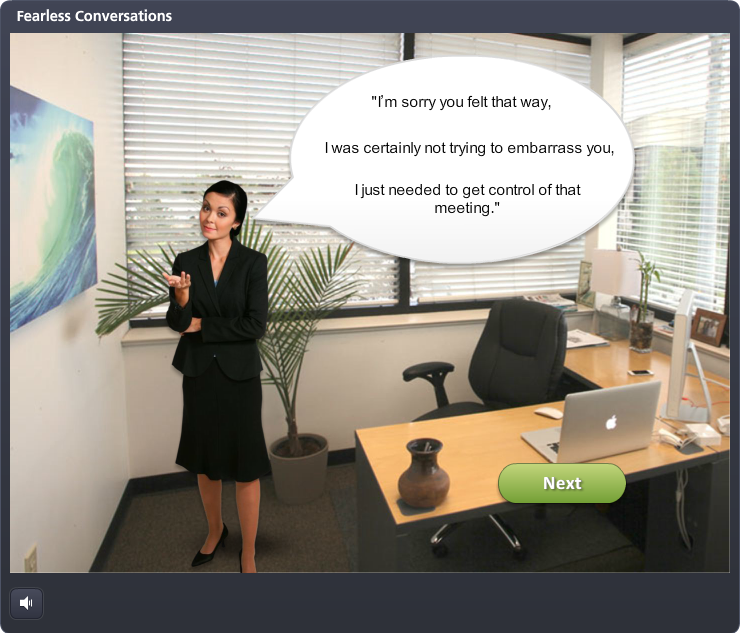Remain learner-centric by designing scenario-based learning experiences. This task-based approach immerses learners in situations where skills are exercised. There’s greater relevance in scenario-based learning. Users apply what they’ve learned to realistic situations, which has proven to be a critical assessment tool. Scenarios should be interactive and immersive, regardless of available resources. Allow us to outline some of the key benefits to scenario-based learning, and why you should be using it.
1. Allows learners to “Fail Forward”
The best place to miss a free throw is in practice. The same ideology rings true in eLearning. By providing users with a platform to “fail”, you create the capacity for learner growth and room for mistakes.
2. Everyone loves a good story
Most folks love a good story. It’s our first mode of information in grade school. We tell them to our friends. We read them. We watch them on TV. Storytelling is a longstanding method of relaying information. We should keep this in mind when designing instruction. Think about how creatively we can transmit content, to make it relevant and applicable. Creating relatable and engaging scenarios, much like stories, resonates with learners and improves knowledge retention.
3. It promotes critical thinking
The phrase, “you won’t know until you try it” rings true here. Scenario-based learning promotes critical thinking by providing the learner with a context to apply knowledge and make decisions.
4. It’s Learner-centric
It’s all about the learner. Period. No two learners will experience your content the same. Scenarios leave room for differences in user comprehension and application of knowledge. Advanced branching scenarios specifically allow different learners to take different journeys to access the learning experiences most relevant to them.
5. Time Acceleration
Let’s say you teach a sales trainee how to prep for a sales call. You say “this is how you do it” and give him the steps. Now he’s got to go do one on his own. He’s got great knowledge retention, so he recalls everything. Until he reaches the final step, and things get murky. A practice scenario during training may have helped him, as he would have been able to execute the call plan in its entirety. Time lapsing processes helps learners see the entire picture, not just a snippet.

